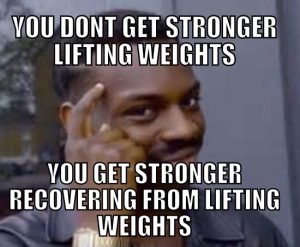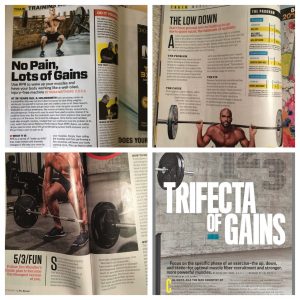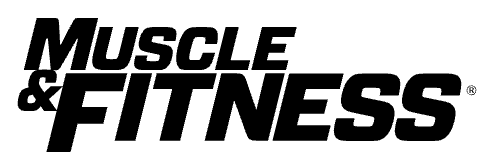5 Things I Learned (or re-learned) in 2017
As the year comes to a close, I’m looking back on some of the eurekas and re-eurakas I encountered in my seminar circuit, reading, and gym chatter. In no particular order, I have drummed up a list of the five biggest hitters that blipped across my radar this year. Here’s to a happy, prosperous, and athletic 2018!The List
- RPR is an absolute game changer
- Skill work daily, strength training 1-2 times per week
- Do you look like what you are trying to do?
- The best guys in the business are also surprisingly accessible
- Athletes should do more vision work

Reverse Fight Club in full effect
In the medical/sports/rehab/injury prevention world, there is a general underlying vibe of learned helplessness. You have x wrong with you… run to the doctors. Y hurts… time to see the chiropractor. Z feels tight… is the trainer available? Don’t get me wrong, there are reasons that you need to spend close to a decade getting degrees in high levels of medicine. And I would love to have a seasoned surgeon operate on me if I broke a leg or got a nasty cut. The traumatic acute injuries that athletes run into are unfortunate and best tended to by those highly skilled professionals. But, the chronic bad back or constant hamstring pulls that many athletes suffer from, I honestly believe can be fixed by yourself.
Knowledge is power and the learning of muscle activation can be the keystone that health and performance is built on. These quick links can give you an idea on what this whole movement is about. Check them out. Or, schedule a session with me and let’s see if you can start feeling and moving better.
Daily skill work, less strength work
Weird to hear a guy who works in the world of getting athletes bigger/faster/stronger to prescribe less time lifting. But, here we are. I deal with mostly high school athletes. And quite honestly, for the average high school athlete 1-2 lifts a week, consistently over the course of the year, is more than enough of a stimulus to get bigger, faster, and stronger. Now, some kids love the Iron more than Tony Stark loves a new maroon and gold suit.
But, let’s not forget that you do not get stronger in the weight room. You get stronger recovering from the weight room.

True story
The skill stuff is something that you can certainly work on with more regularity. Ball handling for basketball players, fielding for baseball athletes, and stick work for lacrosse players can be done on a daily basis. All of those movements are low intensity and easily recoverable.
The faster and more intense the movement – throwing a baseball, sprinting, tackling, lifting- the more time you need to recover. MLB pitchers don’t throw 100 balls a day. NFL guys don’t play 5 games a week. Olympic runners don’t maximally rip out 2,000 meters of daily sprinting. Likewise, your young athlete shouldn’t lift as hard as they can every single day.
Do you look/measure up with what you are trying to be?
Dream big young athletes. But, also be conscious of what you are dreaming about. There are levels to each rung of the sport’s ladder you climb, and at some point you are going to have to stack up to a base standard. Looking to play running back in high school? Tremendous. But, if you run a 7.5 40 and can’t do a single body weight push-up, well sorry son, you are going to be in for a rude awakening.
Want to throw 60 mph and pitch for the local summer league softball powerhouse? Awesome. But, if you weigh 95 pounds soaking wet and broad jump 4 feet? Good luck young lass. Maybe it’s because I have been doing this for so long and it’s in my wheelhouse, but to me it is pretty easy to see if you measure up or not. Sure there are outliers that break the mold, but I wouldn’t bet the farm on being one of them. Generally speaking there’s is a size, strength and speed standard for each sport. Move better, get stronger, master your sport skills, and stack up with the physicality of whatever level you are shooting for.
Big names in the industry are surprisingly accessible
I have been fortunate enough to do some freelance work for a national publication (hint, it rhymes with “Hustle and Witness”). In that capacity, I have had the opportunity to interview some titans in the field. With their vaunted resumes and jam packed schedules, it would be exceedingly easy for them to say they don’t have the time or even blow me off all together. Not one has.

J.L. Holdsworth, Perry Nickelston, Jim Wendler and Cal Dietz. All great coaches.
Visual athletes NEED to Visually Train
This idea falls in line with the daily skill work idea (meaning you can do this frequently). The human eye is controlled by six muscles and like the other 314 bilateral muscles in your body, they too can be trained. However, most athletes train their eyes about as often as the Buffalo Bills make the playoffs (mama we made it!). There are some great resources out there for visual training. Slow the Game Down, and Max bp, are completely game changing in my opinion. You just have to use them with fidelity.

Reigning NL MVP and current Yankee Giancarlo Stanton has worked with slow the game down for 10 years.


